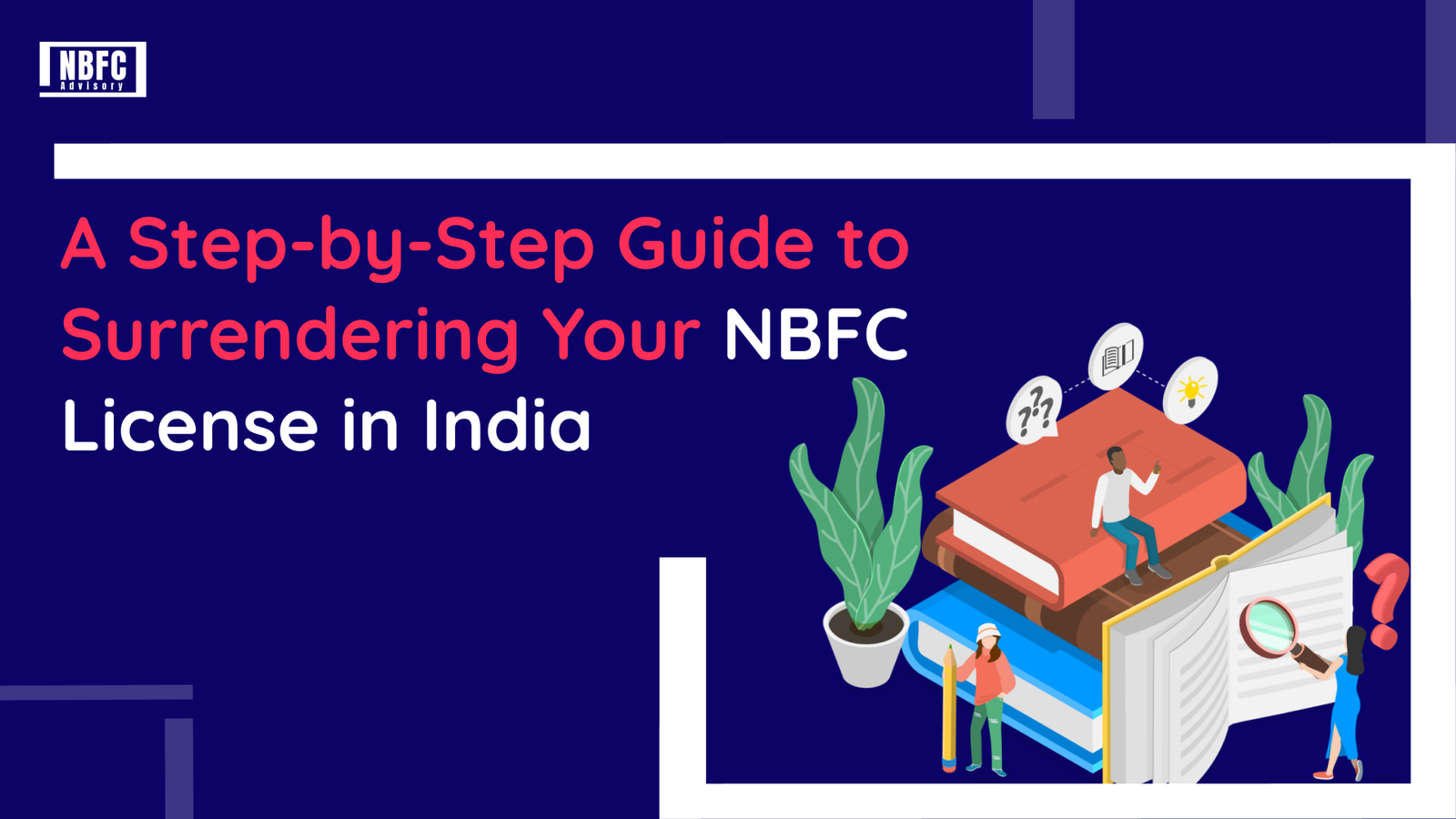Inside This Article
Non-Banking Financial Companies (NBFCs) play a crucial role in India’s financial ecosystem by providing credit, investment, and other financial services. However, due to regulatory changes, financial constraints, or strategic shifts, an NBFC may decide to surrender its license.
The NBFC license surrender process involves multiple steps, regulatory approvals, and documentation to ensure compliance with the Reserve Bank of India (RBI) guidelines.
In this guide, we provide a comprehensive breakdown of how to surrender an NBFC license in India, the challenges involved, and the key factors to consider while making this decision.
Why Surrender an NBFC License?
Several factors may lead an NBFC to cancel its license, including:
- Regulatory Changes: Stricter compliance requirements by the RBI, such as tighter norms for capital adequacy, liquidity management, or governance (Source: RBI Compliance Updates).
- Financial Viability: Declining profitability or high operational costs may make continuing operations unsustainable. According to industry reports, several NBFCs have struggled with asset-liability mismatches and liquidity pressures in recent years.
- Strategic Business Shifts: The NBFC may choose to move into other sectors, such as fintech, to align with emerging business trends and consumer demand.
- Mergers & Acquisitions: An NBFC may decide to surrender its license as part of a strategic merger or acquisition with a larger financial entity.
Understanding these reasons can help in making a well-informed decision regarding NBFC RBI license cancellation.
Step-by-Step Process to Surrender an NBFC License
Step 1: Board Resolution
The first step in the NBFC license surrender process is obtaining approval from the company’s board of directors. A formal resolution should be passed, stating the intent to voluntarily cancel the NBFC license.
Step 2: Settle Liabilities
Before submitting the surrender request, the NBFC must ensure that:
- All outstanding debts and liabilities are cleared.
- Depositors and creditors are paid off.
- The balance sheet reflects no financial obligations.
Statistical Insight: According to recent RBI data, as of 2023, approximately 80% of the total outstanding loans by NBFCs were related to the housing, vehicle finance, and microfinance sectors. Clearing these obligations before surrendering the license is crucial to avoid any legal or financial complications.
Step 3: Prepare and Submit Documents
The following documents must be compiled for submission to the RBI:
- Board Resolution Copy
- Audited Financial Statements (up to the latest financial year)
- No Objection Certificates (NOCs) from creditors and depositors
- Declaration of No Pending Complaints or Liabilities
- Surrender Application Letter addressed to the RBI
Step 4: Application Submission to RBI
The NBFC must submit the prepared application along with supporting documents to the respective RBI regional office. It is advisable to keep multiple copies for record-keeping. In addition, the application should comply with all formats outlined by the RBI.
Step 5: RBI Review & Approval
The RBI scrutinizes the application, verifies financial records, and ensures that all obligations are met. This process may take 2-6 months, depending on compliance and document accuracy. According to RBI guidelines, the review process may take longer if additional information or clarifications are required.
Step 6: Public Notification
Once the RBI approves the license surrender, the NBFC must publish a notice in at least two newspapers (one in English and one in the regional language) declaring the closure.
Step 7: Final Closure Confirmation
After verification, the RBI issues an official confirmation regarding the NBFC deregistration procedure, officially canceling the license. The NBFC is then officially de-registered from the RBI’s list of authorized NBFCs.
Challenges in Surrendering an NBFC License
While the cancel NBFC license India process is straightforward, it involves several challenges:
- Regulatory Delays: The RBI’s scrutiny and approval process can take months, which may lead to delays.
- Liability Settlements: Clearing financial obligations, especially with regard to depositors and creditors, is crucial and may be time-consuming.
- Legal Compliance: Ensuring compliance with taxation and corporate laws adds complexity, as taxes and other liabilities must be properly cleared.
- Stakeholder Concerns: Employees, investors, and creditors may raise concerns during the transition. Communicating the reasons and process clearly to stakeholders can mitigate potential conflicts.
Addressing these challenges requires strategic planning and consultation with legal and financial experts.
Importance of an Informed Decision
When considering how to surrender an NBFC license, it is important to evaluate:

- Impact on Stakeholders: Ensure smooth settlement for employees and investors. According to data from industry surveys, investor confidence tends to decline during NBFC shutdowns if proper communication and settlements are not made (Source).
- Financial Implications: Analyze cost-benefit scenarios before deciding. Consider the potential costs of restructuring or regulatory penalties.
- Alternative Business Models: Explore other financial or investment opportunities. According to a report by the Economic Times, fintech companies are emerging as viable alternatives for NBFCs seeking new business models (Source).
Conclusion
Surrendering an NBFC license in India is a structured process that requires careful compliance with RBI regulations. Proper planning, legal compliance, and professional consultation can ensure a smooth transition. For expert assistance in the NBFC deregistration procedure, connect with NBFC Advisory today. Visit NBFC Advisory for detailed guidance and regulatory support.
By following the right steps and addressing the challenges proactively, you can ensure that the surrender process is completed in a manner that aligns with your business goals and regulatory requirements.






